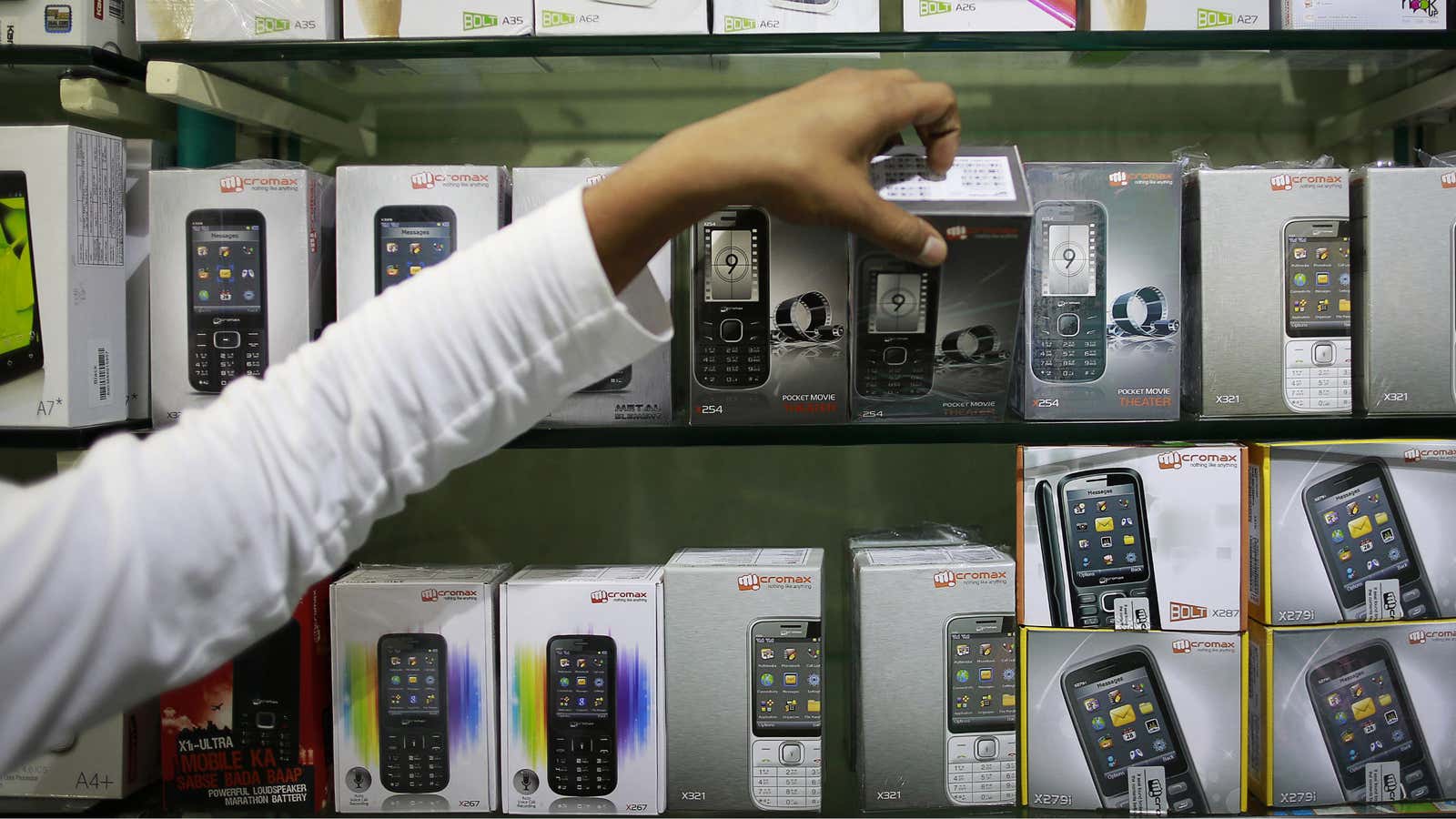Xiaomi, the much-hyped Chinese smartphone maker, certainly knows how to do things in style. Last night, it confirmed that it is entering the Indian market, the world’s largest after its home in China, and the head of Google India, Rajan Anandan, and the vice president of Xiaomi, Hugo Barra, exchanged friendly tweets:
Xiaomi has long signaled its intention to expand beyond its existing markets of China, Hong Kong and Taiwan. It took the first step by going to Singapore earlier this month. But India is at the opposite end of the spectrum. Apart from offering a market whose size makes Singapore’s look like a rounding error, it also has a thriving industry of homegrown phone makers that have quickly gobbled up big chunks of the market. Micromax, the biggest of the lot, alone ships more than a fifth of all smartphones in India, behind only Samsung.
Two routes to the same destination
Micromax and Xiaomi both grew big at home by offering inexpensive devices. But they got there through different routes. Micromax has a big network of vendors, which as Apple learned, is the single best way to gain traction in India. Xiaomi sells its phones online, and at razor thin margins. Its business is selling software and services to people who have the phones. Xiaomi’s move to India, then, is the first big test of whether its model can work outside China.
Two things would suggest it can. First, online retailers have started discounting and promoting smartphones in a sales tactic similar to Xiaomi’s in China. A recent promotion of 20,000 Moto G smartphones sold out in 15 minutes. Motorola was pleased enough with the results to launch its next phone, the Moto X, exclusively on Flipkart, an Indian e-commerce market. Flipkart is in a race for dominance in India with Amazon and eBay, and Xiaomi’s entry would be a good opportunity for one of Flipkart’s competitors to strike a similar deal with the Chinese company.
Second, Anandan’s tweet suggests that Xiaomi has found a partner in Google. The web giant is keen for more Indians to buy smartphones so that they get online and use Google’s services. A partnership between the two could potentially boost Xiaomi’s sales by offering users free app downloads to get them started. (Google has not responded to a request for comment.)
But there are hurdles too. Indians tend to consider the ”made in China” sticker a marker of inferior quality, specially when presented with an Indian alternative. They are also unlikely to spend much on software or services; half of all smartphone owners in India don’t have a data plan, and that number, telecom operators suggest, is falling. And despite the growing popularity of online sales, the big volumes remain in physical stores, which are Micromax’s forte. For all the hype about e-commerce, it still accounts for only 1% of India’s total retail market.
Still, the Indian smartphone market is exploding. Nearly twice as many smartphones were shipped in the last quarter of 2013 as in the same quarter of 2012. And there is plenty of room yet to grow—a recent forecast suggests that over 200 million smartphones will be shipped in India in 2014, second only to China. There is enough room for both Micromax and Xiaomi to thrive.
